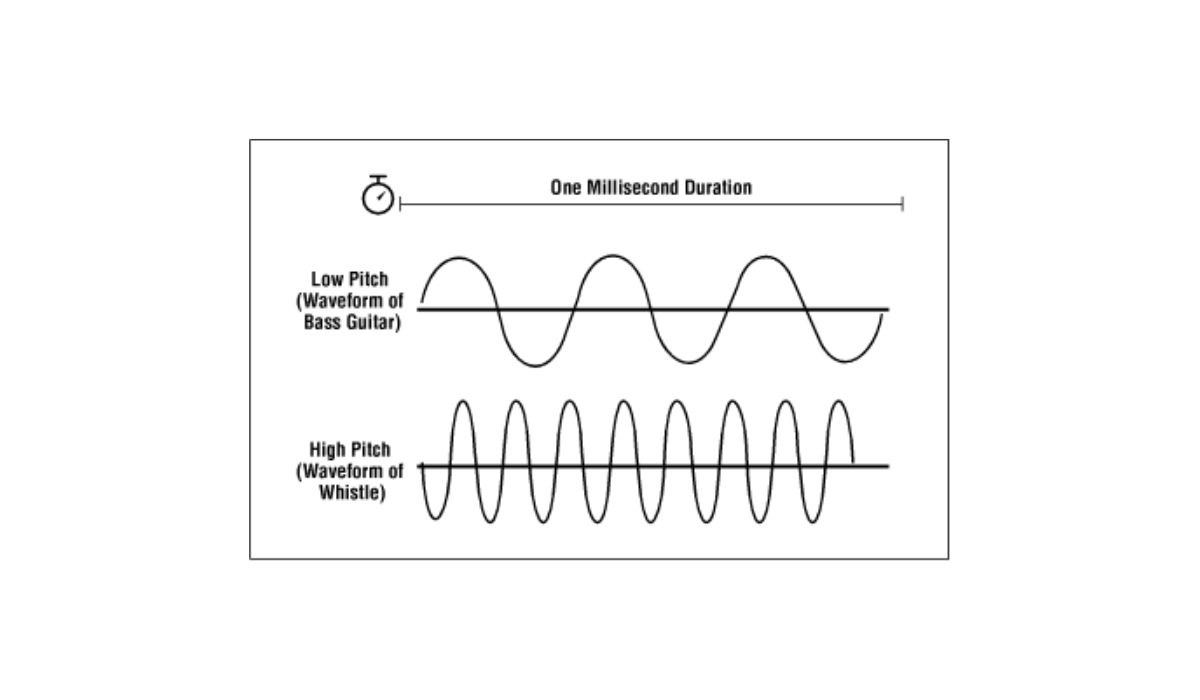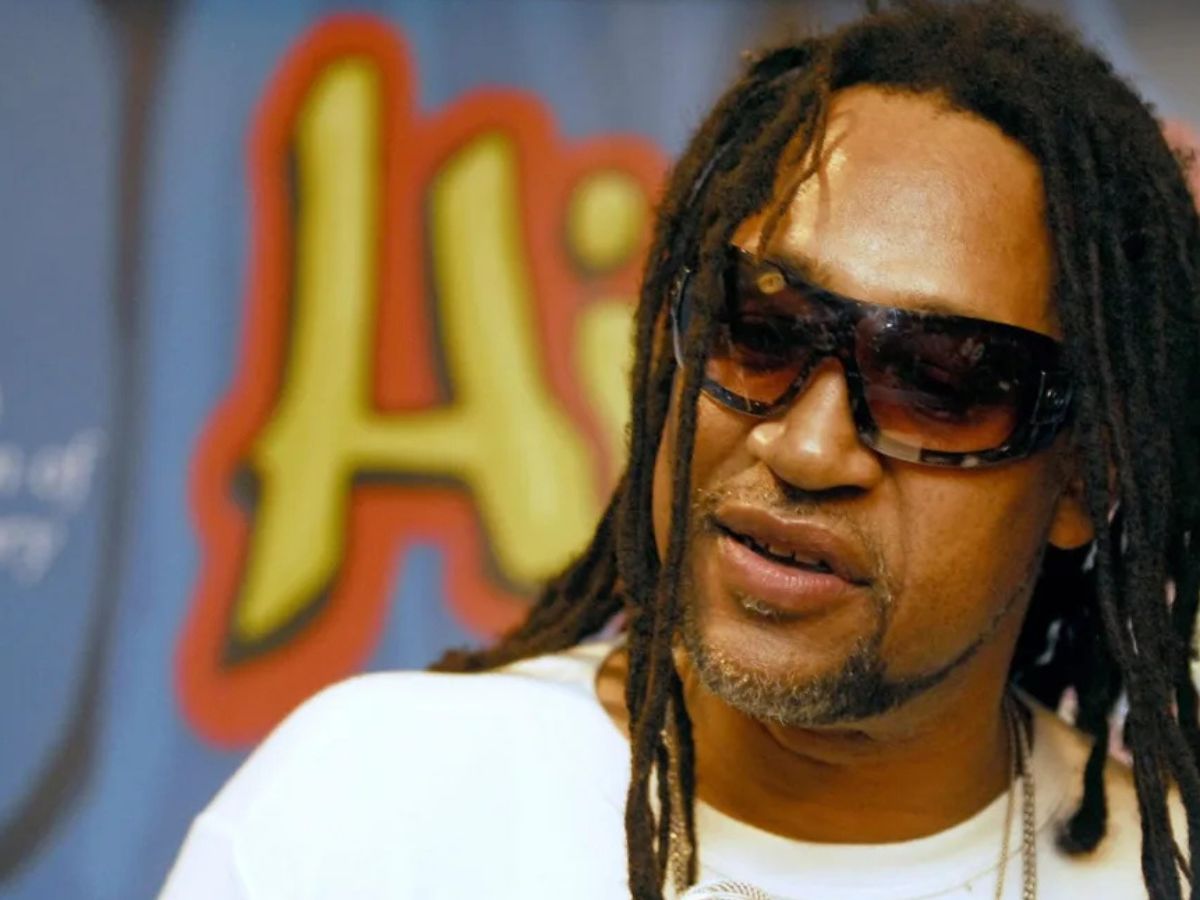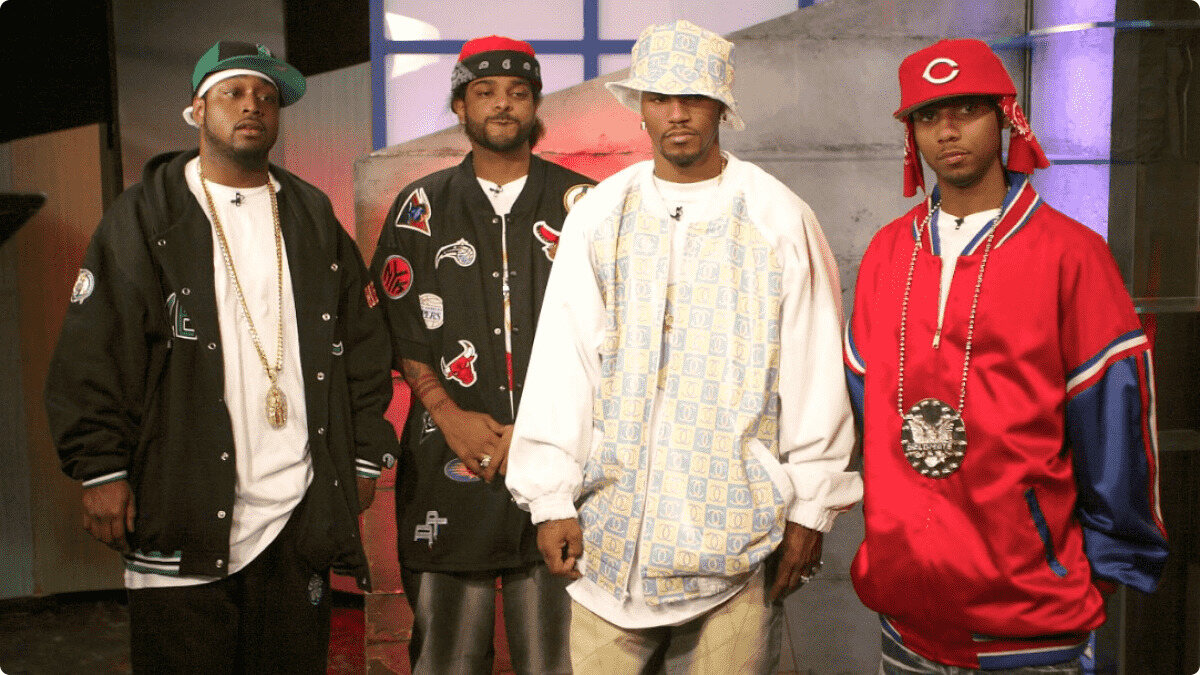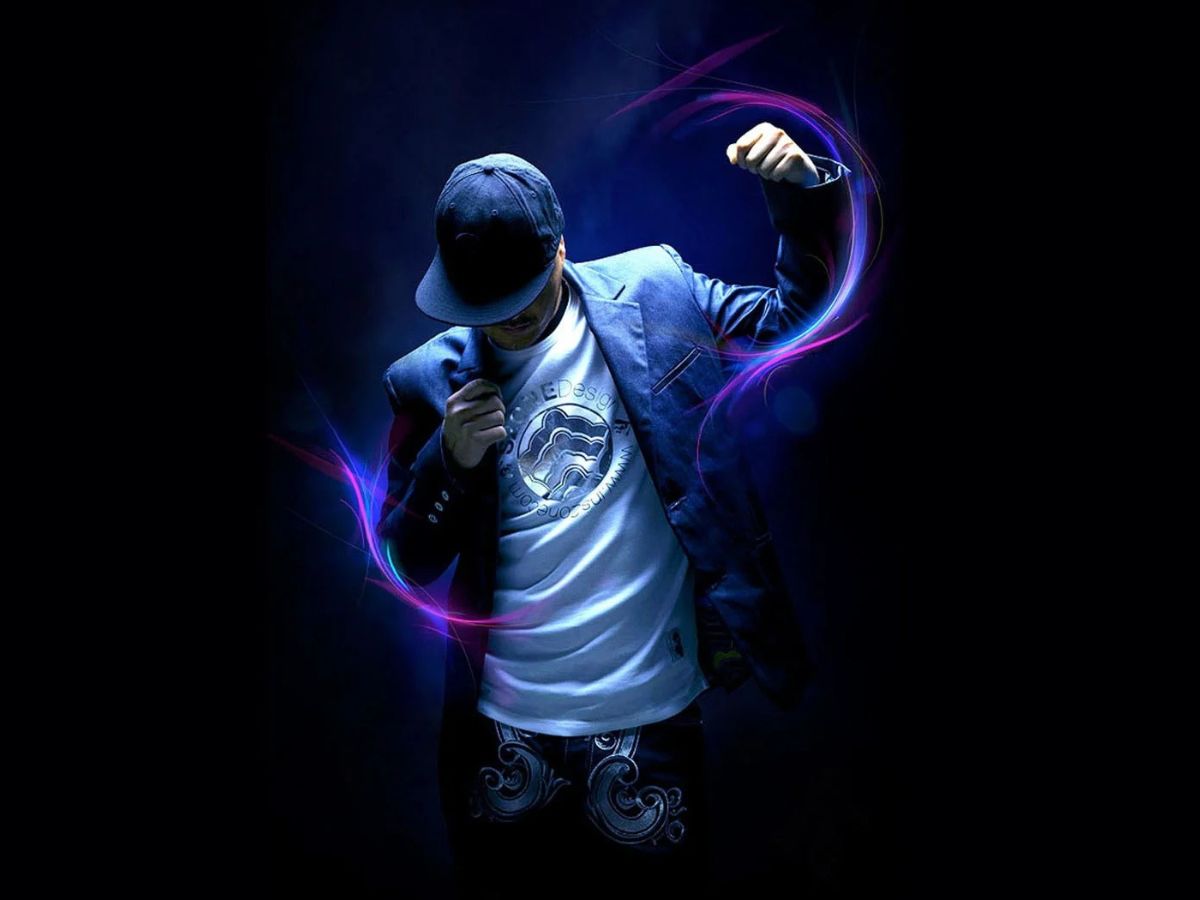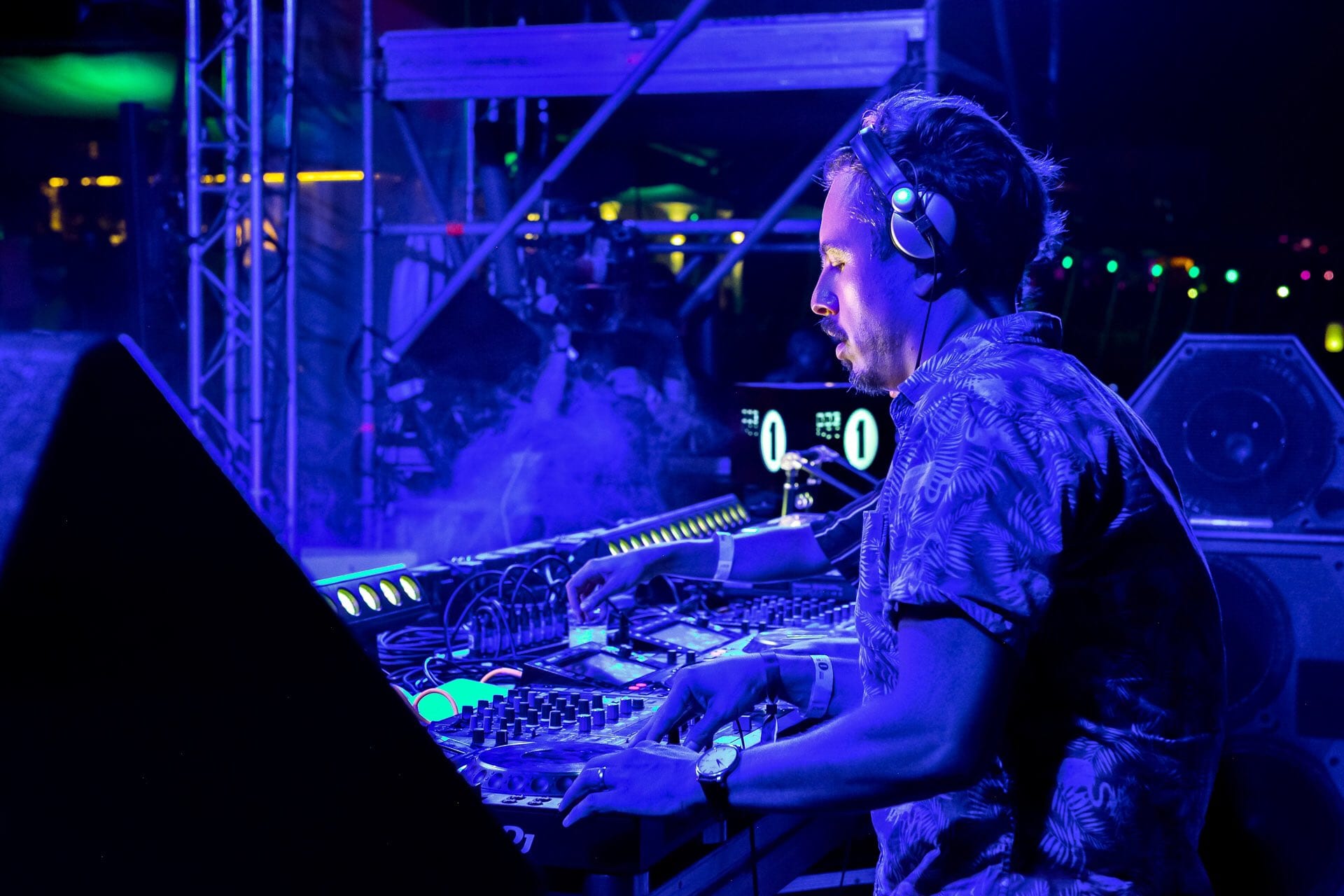

Hip Hop
How Is Hip Hop And Disco Related
Modified: January 22, 2024
Discover the fascinating connection between hip hop and disco music, and how these genres have influenced each other over the years. Uncover the shared history and evolution of these iconic styles.
(Many of the links in this article redirect to a specific reviewed product. Your purchase of these products through affiliate links helps to generate commission for AudioLover.com, at no extra cost. Learn more)
Table of Contents
Introduction
Hip hop and disco are two genres of music that have had a significant impact on popular culture. While they may seem distinct from each other, they actually share a close relationship that has shaped the music, dance, fashion, and overall style of both genres. Understanding the origins and influences of hip hop and disco is key to appreciating the connections between them.
Both hip hop and disco emerged in the 1970s, a time of cultural and social change. They were born out of the creativity and ingenuity of marginalized communities, and both genres provided a means of expression and empowerment.
Disco, with its infectious rhythms and pulsating beats, emerged from the vibrant nightlife scene in New York City. It became the soundtrack for a generation seeking escapism and a release from the pressures of everyday life. Hip hop, on the other hand, originated in the Bronx, New York, as a form of expression for African American and Latino communities. It was a creative outlet for young people to voice their experiences and struggles in a society that often marginalized them.
Despite their different origins, disco and hip hop share a common thread – the celebration of music and dance. Both genres are deeply rooted in African and African-American musical traditions, incorporating elements of rhythm and percussion. Disco drew inspiration from genres such as funk, soul, and R&B, while hip hop embraced the musical styles of jazz, funk, and soul.
Moreover, hip hop and disco were both heavily influenced by the DJ culture. DJs played a crucial role in the development of both genres, as they were responsible for selecting and mixing the music that kept the crowds moving on the dance floor. They pioneered techniques such as sampling, remixing, and scratching, which became integral to the evolution of both hip hop and disco.
In the following sections, we will explore the musical influences, cultural impacts, dance styles, fashion, and sampling techniques that connect hip hop and disco. By understanding the deep connections between these genres, we can truly appreciate the significance and influence they continue to have in the world of music and popular culture.
Origins of Hip Hop and Disco
Hip hop and disco originated in different cities and cultural contexts, yet both genres emerged in the 1970s as expressions of marginalized communities. Understanding the origins of hip hop and disco is key to recognizing their shared history and influence.
Disco originated in the vibrant nightlife scene of New York City in the early 1970s. It was born out of the need for an inclusive and celebratory space where people could come together, regardless of their background or social status. Popular disco clubs like Studio 54 and Paradise Garage attracted diverse crowds and became havens for self-expression and liberation.
Hip hop, on the other hand, was born in the Bronx, New York, during the same era. It emerged as a form of artistic expression for African American and Latino communities, reflecting the social and economic challenges they faced. Hip hop provided a creative outlet for young people to express themselves through music, dance, graffiti, and spoken word.
The early hip hop scene in the Bronx revolved around block parties and DJ battles. DJs such as Kool Herc, Grandmaster Flash, and Afrika Bambaataa played a crucial role in laying the foundation for hip hop by mixing and blending different genres of music, including funk, soul, and R&B. These DJs used their skills to create innovative sounds and keep the partygoers engaged and energized.
Meanwhile, disco DJs like DJ Kool Herc and DJ Grandmaster Flash were pioneers in manipulating records and creating seamless mixes, pushing the boundaries of what was possible with vinyl records and turntables. Their experimental techniques laid the groundwork for the sampling and remixing that would become integral to both hip hop and disco.
Despite their different origins, hip hop and disco shared similar social and cultural contexts. They both arose during a time of social unrest and cultural upheaval, providing an outlet for people to voice their struggles and aspirations. Both genres embraced a spirit of rebellion, self-expression, and community.
As hip hop and disco gained popularity, they found common ground in underground clubs and parties where DJs played a mix of both genres to cater to diverse crowds. This blending of styles and influences further solidified the connections between hip hop and disco, creating a cultural exchange that fueled their evolution.
The origins of hip hop and disco set the stage for their intertwined histories. In the following sections, we will explore the musical influences, dance styles, fashion, and sampling techniques that further cemented the relationship between these influential genres.
Musical Influences
The musical influences of hip hop and disco are diverse and encompass a wide range of genres that contributed to the development and evolution of both styles. From funk and soul to jazz and R&B, these genres laid the foundation for the distinct sounds of hip hop and disco.
Disco drew heavily from funk and soul, infusing its pulsating beats and infectious rhythms with the grooves and melodies of these genres. Artists like James Brown, Sly and the Family Stone, and Earth, Wind & Fire were major influences on disco music, with their infectious grooves and energetic performances captivating audiences and inspiring dancers to hit the dance floor.
Hip hop, in its early days, sampled and looped these funk and soul tracks to create its beats. Artists like The Isley Brothers, James Brown, and Parliament-Funkadelic provided the foundation for hip hop’s distinctive sound, as their music was often sampled and reimagined by pioneering DJs and producers. The rhythmic elements and funky breaks found in these records became the building blocks of hip hop’s musical landscape.
Jazz also played a significant role in shaping both hip hop and disco. The improvisational nature of jazz, with its emphasis on individual expression and instrumentals, influenced the freestyle aspect of hip hop. The rhythmic complexity and syncopation found in jazz music were incorporated into hip hop beats, giving them a unique and distinct flavor.
Similarly, jazz-infused disco tracks, known as “jazz-funk,” emerged in the late 1970s. These tracks incorporated elements of jazz improvisation and instrumentation into the disco sound, creating a more sophisticated and nuanced style of disco music. Artists like Roy Ayers and Herbie Hancock brought their jazz backgrounds into the disco scene, adding a level of musicality and depth to the genre.
R&B, with its smooth vocals and melodic arrangements, also had a significant impact on both hip hop and disco. Artists like Marvin Gaye, Stevie Wonder, and Michael Jackson influenced the lyrical and vocal aspects of hip hop and disco music, with their soulful performances and emotional lyrics resonating with listeners.
It is important to note that the musical influences of hip hop and disco were not just limited to specific genres but also encompassed a wide range of artists and songs. DJs and producers in both genres were known for their crate-digging and sampling techniques, searching for hidden gems and obscure tracks from various genres to create unique and innovative sounds.
From funk and soul to jazz and R&B, the diverse musical influences of hip hop and disco shaped the development of these genres and influenced the soundscape of popular music as a whole. The fusion of these influences created a dynamic and ever-evolving musical landscape that continues to inspire artists and captivate audiences to this day.
Cultural Influences
Hip hop and disco not only revolutionized the music industry but also had a profound impact on popular culture and society. Both genres served as catalysts for cultural movements, influencing fashion, language, social dynamics, and empowerment within marginalized communities.
Disco, with its inclusive nature and emphasis on liberation, played a crucial role in fostering a sense of unity and acceptance. The disco clubs of the 1970s became safe havens for marginalized groups, including the LGBTQ+ community, people of color, and women, who found solace and freedom on the dance floor. Disco provided an escape from societal constraints, allowing individuals to express themselves through dance, fashion, and personal style.
On the other hand, hip hop emerged as a form of artistic and cultural resistance in the Bronx during a time of socio-economic challenges. It became a platform for African American and Latino communities to voice their experiences, struggles, and aspirations. Hip hop brought attention to social issues such as racial inequality, poverty, and police brutality, allowing marginalized voices to be heard.
Both hip hop and disco were instrumental in creating new forms of self-expression and cultural identity. The fashion and style associated with both genres became iconic and influential. Disco fashion was characterized by flamboyant and flashy outfits, with sequins, platform shoes, and bell-bottom pants dominating the dance floor. Hip hop embraced a more urban and street-style aesthetic, with baggy pants, oversized shirts, and sneakers becoming synonymous with the culture.
Language and slang also played a significant role in shaping the cultural influence of hip hop and disco. The disco era introduced expressions like “groovy,” “boogie down,” and “party animal,” which became part of the wider cultural lexicon. Hip hop, with its lyrical wordplay and repurposing of language, introduced terms and phrases like “dope,” “fly,” and “fresh,” which became synonymous with the culture and influenced mainstream language.
Furthermore, both hip hop and disco fostered a sense of empowerment within their respective communities. They provided a platform for individuals to tell their stories, express their creativity, and uplift their communities. Hip hop’s emphasis on individuality and street culture empowered young people to embrace their unique identities and pursue their dreams, while disco’s message of unity and liberation inspired a generation to embrace diversity and celebrate life.
As hip hop and disco gained popularity, their cultural influence extended beyond music and fashion. They influenced film, television, and visual arts, shaping the narratives and aesthetics of popular culture. Hip hop’s influence can be seen in movies like “Boyz n the Hood” and TV shows like “The Fresh Prince of Bel-Air,” while disco made its mark in iconic films like “Saturday Night Fever.”
The cultural influences of hip hop and disco have endured over the years, as evidenced by the continued popularity and influence of these genres in contemporary culture. Both hip hop and disco opened doors for underrepresented communities, elevating their voices and providing a platform for artistic expression and cultural advancement.
Dance Styles and Moves
Hip hop and disco brought forth a revolution in dance, introducing unique styles and moves that have become iconic and influential. The dance styles associated with these genres not only became synonymous with the music but also helped shape the culture and identity of the communities that embraced them.
Disco dancing, characterized by its flashy and energetic movements, became a cultural phenomenon in the 1970s. The quintessential disco dance moves included the Hustle, the Bump, and the funky spins and twirls. The Hustle, a partner dance, featured synchronized steps and intricate turns, while the Bump, also known as the “bump and grind,” involved rhythmic hip movements and strategic bumps with a partner.
However, it was the individual freestyle dancing that truly defined disco. Dancers would express themselves through improvised movements, incorporating elements of jazz, funk, and soul into their routines. The dance floor became a space for self-expression, showcasing individual style and creativity.
Hip hop dance, on the other hand, evolved from street dance styles and incorporated a wide range of movements and techniques influenced by African and African-American dance traditions. It embraced the ethos of improvisation and individuality, allowing dancers to tell stories and express emotions through their movements.
Breaking, or b-boying/b-girling, became an integral part of hip hop culture and one of the most recognizable dance styles associated with the genre. Breaking is characterized by dynamic moves such as power moves, freezes, and intricate footwork. It is a highly acrobatic and physically demanding dance style that showcases the strength, agility, and creativity of the dancers.
Other notable dance styles in hip hop include popping, locking, and krumping. Popping involves quick muscle contractions and isolations, creating a popping effect in the body, while locking is characterized by sharp and exaggerated movements, often performed in a robotic or mechanical style. Krumping, on the other hand, is a high-energy and expressive dance style that emerged from the streets of Los Angeles, known for its aggressive and emotive movements.
Both hip hop and disco dancing influenced and inspired each other. The energetic and rhythmic movements of disco found their way into hip hop dance routines, while the improvisational and individualistic aspects of hip hop dance added a new layer of creativity to the disco scene.
Over the years, these dance styles have continued to evolve and influence the dance community. They have become integral components of hip hop and disco culture, with dance battles, competitions, and showcases playing a significant role in the community’s development and growth.
The dance styles and moves associated with hip hop and disco have become iconic and have left a lasting impact on popular culture. They not only serve as a means of self-expression but also embody the spirit and energy of the music, enhancing the overall experience of both genres.
Fashion and Style
The fashion and style of both hip hop and disco are undeniably influential, transcending their respective genres and leaving a lasting impact on popular culture. The distinctive looks associated with hip hop and disco have become iconic and continue to inspire fashion trends to this day.
Disco fashion, with its glitz and glamour, was all about making a statement. Sequins, glitter, and metallic fabrics were popular choices, reflecting the discotheque’s dazzling lights and energetic atmosphere. Disco-goers embraced bold and flamboyant attire, with extravagant jumpsuits, bell-bottom pants, and platform shoes becoming synonymous with the disco scene.
Women’s fashion in the disco era showcased a sense of empowerment and freedom. Wrap dresses, deep V-necklines, and flowing maxi skirts were popular choices. Halter tops, crop tops, and tube tops were also prominent trends, allowing women to show off their confidence and embrace their femininity.
For men, tight-fitting shirts, often unbuttoned to reveal chest hair, were common fashion statements. Wide-legged pants with high waistlines, known as flares, were paired with platform shoes, creating a striking and stylish silhouette. Men also embraced bold patterns and vibrant colors in their clothing choices, reflecting the energetic and vibrant atmosphere of the disco scene.
Hip hop fashion, on the other hand, arose from the streets and became a representation of urban culture and identity. Baggy pants, oversized shirts, and hoodies became signature pieces of hip hop style, reflecting a sense of rebellion and a rejection of mainstream fashion norms.
During the early years of hip hop, sports brands like Adidas, Puma, and Nike became integral to the fashion. Tracksuits, sneakers, and basketball jerseys became staples of hip hop attire, representing the culture’s roots in street sports and athletic aesthetics. The incorporation of bold logos and branding further solidified the connection between hip hop and fashion.
As hip hop evolved, fashion became a way for artists to express their creativity and individuality. Rappers like Run-D.M.C. popularized the “outfit of the day” culture, often seen wearing iconic items like Adidas Superstar sneakers and oversized gold chains. This influenced the rise of streetwear and the merging of high fashion with urban style.
Streetwear brands like Supreme, Off-White, and BAPE have gained popularity, providing a platform for hip hop artists and fashion enthusiasts to showcase their unique sense of style. Hip hop fashion is now characterized by a mix of luxury brands, urban aesthetics, and vintage finds, with artists setting trends and pushing boundaries when it comes to fashion and style.
Both hip hop and disco fashion have had a lasting impact, with elements of these styles often reappearing in contemporary fashion trends. The boldness, individuality, and sense of self-expression that define the fashion of hip hop and disco continue to influence and inspire designers, musicians, and fashion enthusiasts around the world.
Sampling and Remixing
Sampling and remixing are integral elements of both hip hop and disco, playing a significant role in the evolution and innovation of these genres. These techniques involve taking snippets of existing songs and rearranging or reinterpreting them to create new musical compositions.
Disco DJs were pioneers in the art of sampling, as they would isolate and loop sections of popular songs to create extended dance tracks. This practice extended the life of songs on the dance floor, allowing dancers to groove to their favorite parts for an extended period. DJs would meticulously select and mix records to seamlessly transition from one track to another, creating a continuous flow of music that kept the partygoers energized.
Hip hop took sampling to new heights, with DJs and producers using records as a canvas to create entirely new compositions. Hip hop artists would dig through crates of vinyl records, searching for unique and distinctive sounds to incorporate into their beats. By sampling drum breaks, melodies, and vocal snippets from various genres and eras, they crafted a collage of sonic elements that formed the backbone of hip hop music.
Sampling in hip hop allowed artists to pay homage to their musical influences and create a tapestry of sounds that reflected the diverse and eclectic palettes of the genre. It became a form of musical storytelling, with each sample representing a fragment of history and culture.
However, the issue of copyright and intellectual property arose as sampling became more prevalent. Legal battles and disputes over unauthorized samples led to the development of techniques such as interpolation, where existing melodies are re-recorded rather than sampled directly. This allowed artists to recreate the essence of a song while avoiding potential legal issues.
Remixing also became a vital aspect of both hip hop and disco culture. Remixes involve taking an existing song and reimagining it with new production elements or adding guest verses from other artists. Remixes became a way to breathe new life into popular tracks, extending their reach and keeping them relevant in club settings.
In hip hop, remixes allowed artists to collaborate and showcase their skills alongside established acts. It became an opportunity for artists to put their own spin on a song, reinventing it with their unique style and flavor. Remixes became a platform for experimentation, allowing for creative and unexpected collaborations.
Both sampling and remixing have transformed the music industry, giving rise to a culture of musical innovation and reimagining. Hip hop and disco artists have pushed the boundaries of creativity by repurposing existing sounds and creating new works that intertwined multiple genres and eras.
The practice of sampling and remixing has not only influenced hip hop and disco but has also had a profound impact on other genres. It has become a staple in electronic music, pop, and even rock, with artists incorporating these techniques to create fresh and dynamic compositions.
Sampling and remixing continue to be important tools in the creative toolbox of musicians, allowing for the ongoing exploration and reinterpretation of musical possibilities. With ever-evolving technology and a vast musical history to draw from, the art of sampling and remixing will undoubtedly remain a driving force behind musical innovation for years to come.
Evolution and Current Influences
The evolution of hip hop and disco has been marked by constant innovation, reinvention, and the influence of contemporary musical and cultural movements. These genres have continued to evolve and adapt to the changing times, leaving a lasting impact on popular culture.
Disco, after reaching its peak popularity in the 1970s, began to decline in the late 1970s and early 1980s. However, its impact and influence endured, as the disco sound influenced the emerging genres of dance-pop and electronic music. Artists like Madonna, Michael Jackson, and Prince incorporated disco elements into their music, blending them with new wave, funk, and R&B to create a fresh sound that dominated the airwaves.
Hip hop, on the other hand, continued to evolve and expand its influence over the years. The 1980s saw the rise of rap music, as artists like Run-D.M.C., Public Enemy, and N.W.A. brought a more politically charged and socially conscious approach to the genre. Hip hop’s influence extended beyond music, influencing fashion, language, and street culture.
In the 1990s, hip hop experienced a golden age, with artists like Tupac Shakur, The Notorious B.I.G., and Wu-Tang Clan pushing the boundaries of lyricism and storytelling. This era saw the emergence of sub-genres within hip hop, such as gangsta rap, conscious rap, and alternative hip hop, each with its unique style and message.
In the 2000s, hip hop’s mainstream success skyrocketed, with artists like Jay-Z, Eminem, and Kanye West taking center stage. The genre began to incorporate more diverse musical influences, creating a fusion of hip hop, R&B, pop, and electronic sounds. This era also saw the rise of sub-genres like crunk, trap, and mumble rap, with artists like Lil Jon, Gucci Mane, and Future shaping the sound of the decade.
Today, both hip hop and disco continue to influence and shape contemporary music. Artists such as Beyoncé, Bruno Mars, and Daft Punk have embraced disco elements in their music, infusing modern production techniques with the infectious grooves and pulsating rhythms of the genre. Their music pays homage to the nostalgic sounds of disco while creating a fresh and modern sound.
Hip hop, as one of the most dominant genres in popular music, continues to be a driving force in shaping modern culture. Artists like Kendrick Lamar, J. Cole, and Cardi B have carried the torch, addressing social issues, pushing artistic boundaries, and redefining the sound of hip hop. The genre has become a global phenomenon, with artists from all corners of the world incorporating hip hop elements into their music and embracing the culture.
The influence of hip hop and disco extends beyond music. Both genres have inspired and influenced other forms of artistic expression, such as visual arts, film, and dance. The impact of these genres can be seen in the fashion industry, with hip hop fashion trends continuing to drive urban and streetwear aesthetics.
As hip hop and disco continue to evolve, their impact on popular culture remains undeniable. These genres have shaped and influenced multiple generations, leaving a profound and lasting mark on music, fashion, and society as a whole.
Conclusion
Hip hop and disco, while distinct in their origins and styles, share a rich and intertwined history that has had a profound impact on music, dance, fashion, and culture. Both genres emerged as expressions of marginalized communities, providing spaces for self-expression, unity, and empowerment.
From the vibrant discotheques of the 1970s to the streets of the Bronx, hip hop and disco captivated the world with their infectious beats, energetic dance moves, and powerful messages. Through their music, they brought attention to social issues, celebrated diversity, and provided a voice for often unheard communities.
The musical and cultural influences of hip hop and disco are diverse and far-reaching. From the funky rhythms of soul and the improvisational nature of jazz to the glitz and glamour of disco fashion, these genres drew inspiration from a wide range of sources to create their unique sounds and styles.
Sampling and remixing emerged as essential techniques in the evolution of both genres, allowing artists to create new compositions by reinterpreting existing songs. These techniques not only shaped the music but also reflected the spirit of innovation and creativity that defined hip hop and disco culture.
It is important to recognize the continued influence of hip hop and disco in contemporary culture. Both genres have evolved and adapted to the changing times, inspiring new generations of artists to push boundaries, challenge norms, and redefine the sounds and styles of popular music.
Moreover, hip hop and disco have transcended their musical origins to become cultural movements. They have influenced fashion, language, visual arts, and social dynamics, leaving an indelible mark on popular culture that continues to resonate today.
In conclusion, hip hop and disco are more than just musical genres – they represent movements that have shaped and transformed society. Through their inclusive nature, innovative techniques, and powerful messages, they have brought people together, empowered marginalized communities, and inspired generations of artists and enthusiasts. The connections between hip hop and disco run deep, weaving a narrative of creativity, resilience, and cultural impact that will forever be a part of the rich tapestry of music history and popular culture.

